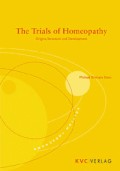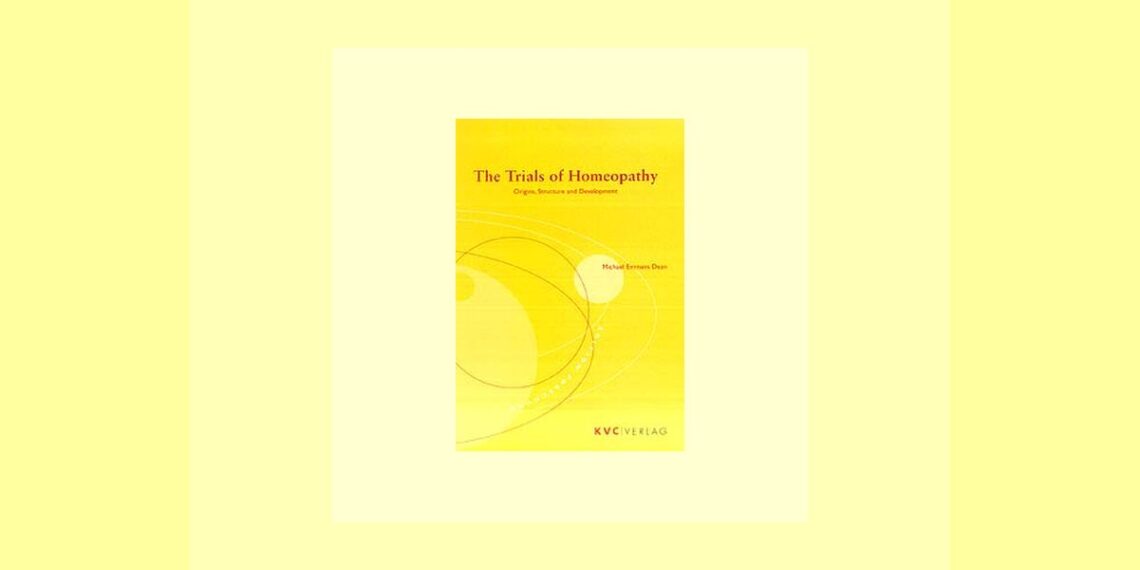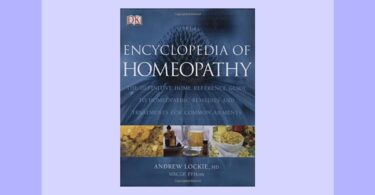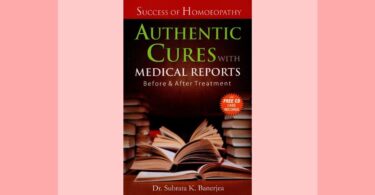
Author: Dr. Mike Emmans Dean
Publisher: KVC Verlag
Pages 305, soft cover (with a CD)
ISBN: 3-93351-40-5
Price: $32.00
Reviewed By: Neil D. Shere aka ‘bach’
———————————————-
In a word, this is an important book. If not entirely unique, it is in any event unusual for combining historical scholarship with a professionally competent handling of clinical evidence, within the context of medical, and specifically homeopathic practice. No less important, the book is recommended for its technical grasp of quantitative methods in scientific research. Finally, as it presents a comprehensive review of the published “trials of homeopathy” to the end of the 20th century, it provides a reasonably up-to-date foundation for renewed efforts to improve quantitative research in homeopathy.
Needless to say, there is nothing in this book that will lead to any quick resolution of the deep division of opinion and feelings that characterizes today’s scientific debate over homeopathy, as it has for the past two centuries. But from the homeopathy side, it is gratifying to see, gathered within one jacket, reasoned accounts of a number of historical successes for homeopathy, for example, its famous achievement in the 1854 cholera epidemic in London. Likewise, historical accounts, some appearing to be well documented, suggest that the established medical authorities deliberately suppressed findings from successful homeopathic interventions in a number of hospital-based trials; some of these trials lasted for periods of several years and involved hundreds and even thousands of patients, and reflected varying levels of careful planning to protect the validity of data, including, in one trial or another, randomization and blinding.
Such accounts, it seems to me, can not be ignored: though some will successfully nitpick this or that outcome or standard, as can be done with any clinical or experimental procedure, the evidence Dean presents is compelling enough as to demand at least a serious audience, and a rigorous analysis. In short, the results they show simply cannot be casually dismissed, without harming the reputation of the critic who does so without providing reasonable cause. Examination of the historical record must, further, be made on its own terms and merits: inadequacies in the record can and must be unearthed, but the evidence in support of homeopathy cannot, either, be suppressed. A balanced examination of both sides may be inconclusive, but it must account for the evidence, whether for or against.
An attempt at an impartial reading of the text, in any case, suggests that history offers a fairly profound range of challenges to both sides in the debate. The strong suit of the skeptical argument is in the apparent failure of homeopathy to show success in the modern controlled research trial. Although not as absolute a failure as some skeptics would like to pretend, there is certainly no unavoidable mandate in favor of the homeopathic side. There are, of course, two obvious explanations for this failure: the skeptic will say – making the assumption that the controlled trial is appropriate to the task – the failure reflects that homeopathy simply doesn’t work; the homeopath will say – often giving the appearance of defensiveness – that homeopathy is too complex or too individualized to be accurately measured by quantitative instruments.
But Dean’s narrative clearly refutes any attempt to dismiss the appropriateness of quantitative investigations of homeopathic practice. Indeed, it is illuminating to find that the homeopathic community itself was a leader in the development of objective research strategies into medical treatment, including implementation of the earliest blinded trials. Dean reviews a wide range of established scientific protocols and existing standards for evaluating the reliability of their findings. This is an important contribution of an important book, for, as we have seen, homeopathy is not easy to test by conventional methods, or, at least, by the currently fashionable controlled trial.
For one example, Dean reviews a trial (p. 223) with a large sample (n = 1573) that showed a larger percentage (10% to 2%) of symptoms of aggravation in the verum compared to the control arm of the trial. Furthermore, and more important from the clinical side of things, the nature of the effects produced in the experimental arm were characteristically variegated in their nature, specific to the remedy prescribed, and tending toward extinction on repetition of dose, compared to the usual “vanilla” assortment of side effects produced in the control arm, at a percentile that remained steady throughout the dosing regimen of the trial.
These outcomes represented a small enough percentage of participants that they might not have been reliably produced in a smaller trial, a fact that underscores the need for large cohorts in at least some homeopathy experiments, to reliably tease out subtle effects. But such an outcome illustrates the importance of clinical standards for evaluating trial outcomes, in addition to the more usual statistical reliability scales: after all, had the trial population been much smaller, the reliability of the statistical difference in verum v control outcomes could have been reduced to insignificance – and, yet, a clinical assessment of the quality of symptomatic response, in the two arms of the trial, would still have produced compelling evidence that verum outcomes were consistent with expectations derived from homeopathic theory and medical practice, that symptoms produced would vary according to the medication, and the dosing routine.
Beyond this, there are numerous other items of interest in Dean’s monograph that will be of interest to the homeopath as well as the medical historian. Though offering the potential for provoking some skeptical chuckles, it is nevertheless interesting to learn that Hahnemann’s process of trituration was borrowed from the alchemist’s methods for handling materia. Dean’s survey of the various epistemological systems informing medical science, from Kant to Hegel and beyond, is also interesting, though difficult to follow for those of us not overly inclined to philosophical systems; on the other hand, the skeptic, at home with such as Karl Popper, might find this part of the discussion more to his liking. In any case, at its root Dean’s book is a wealth of academic resources for the scholar interested in finding out more about the history and experimental record of subavogadrean medicine.
One might hope, perhaps in vain, that such an intellectually careful and academically thoroughgoing effort to explore the subject and present a reasoned argument, will be met with a renewal of interest, on both sides, in the best practices in science and academia, of thorough documentation and scrupulous, reasoned examination of sources, as well as critical examination of experimental findings. Skeptics frankly need to stop pretending the absence of a scientific explanation for homeopathic action is equivalent to a scientific refutation of the possibility of such action. And homeopaths need to avoid their sometimes silly objections to research methodology, for example, that placebo effect cannot be at work in the treatment of a child or a pet: of course, such naivete must give way to understanding, that the proud parent or pet owner is capable himself, thank you, of bias in his observation of the patient’s response!
If research technology can withstand naïve complaints, it is nevertheless true that serious reservations must be entertained regarding the quality of research trials realized in recent efforts to take a quantitative measure of homeopathic efficacy. But a continuation of the recent tendency for homeopathy to “fail” quantitative measures should not be anticipated with equanimity. Unfortunately, a glance at the research horizon does not encourage confidence that our understanding of problems in the path of this project has advanced very far.
Indeed, the very complexity of homeopathic practice, and the varying schools that claim legitimacy under its mantle, are cause for concern. In this context, it would be prudent to constrain our ambitions, at first, to a very narrow focus, to produce a clear positive result around the most basic of questions: whether homeopathic remedies have any effect at all, or indeed are merely sugar pills. And the only way to approach that objective with confidence, is to implement a proving trial that emphasizes and even overemphasizes the qualities of a proving, namely, production of symptoms, even at the expense of the usual, reasonable concern in homeopathy to provoke only the mildest reaction. In short, if early response of provers in such a trial are not clear, then dosing must be repeated, and size of dose increased, until production of symptoms is unmistakable. This may involve some risk, and this course cannot be recommended without serious reservations. Nevertheless, this must at least be considered, in order to produce results that can overcome the often obscuring haze of the controlled trial, as I have argued in two earlier papers.(1, 2)
In any event, skeptics may be biased, but not all of them are stupid, and their methodology is a respectable implement in the armamentarium of science. Homeopaths simply should recognize this reality and learn to use these research tools more effectively – or absent themselves from the debate. But in their turn, skeptics should learn that calibrating the RCT to real world medical practices requires more than self-satisfied presumption, or a condescending refusal to even read a book. There have been enough surprises in the unfolding history of scientific discovery to encourage everyone to consider alternative intellectual values, regarding methodologies of both practice and research, and even the definition of such a basic concept as “evidence” itself. At its worst, a failure to regard the contributions of observational methodologies is nothing more than a propagandist’s bludgeon, hammering any ‘threatened’ discourse into politically correct submission.
In short, the inability to discuss homeopathic theory intelligently is often as much a shortcoming from the skeptic side as a failure to understand objective research is, often, from the homeopathic side – though in saying this, the serious work that is ongoing should not be overlooked, as reflected, just as a single example, in a recent issue of The Journal of Alternative and Complementary Medicine, which was devoted to this subject.(3) Of course, although the political atmosphere of our times favors so-called “objective” research, the perspicacious trialist will want to assure himself that no stone has been left unturned, so as to produce an accurate and honest measure the object of investigation. In short, there is a lot of work left to do, and the stakes for the world’s health are too high, to jump to conclusions without considering the evidence. All of it.
To this end, Michael Emmens Dean has made a significant contribution.
1) Proving Homeopathy. 2005. Hpathy Ezine, April. https://hpathy.com/scientific-research/proving-homeopathy/
2) Is the Randomized Double Blind Placebo Controlled Trial an Objective Scientific Instrument? 2006. Hpathy Ezine, January. https://hpathy.com/scientific-research/randomized-double-blind-placebo-controlled-trial-objective-scientific-instrument/
3) The Journal of Alternative and Complementary Medicine. 2005. vol. 11, no. 5.






